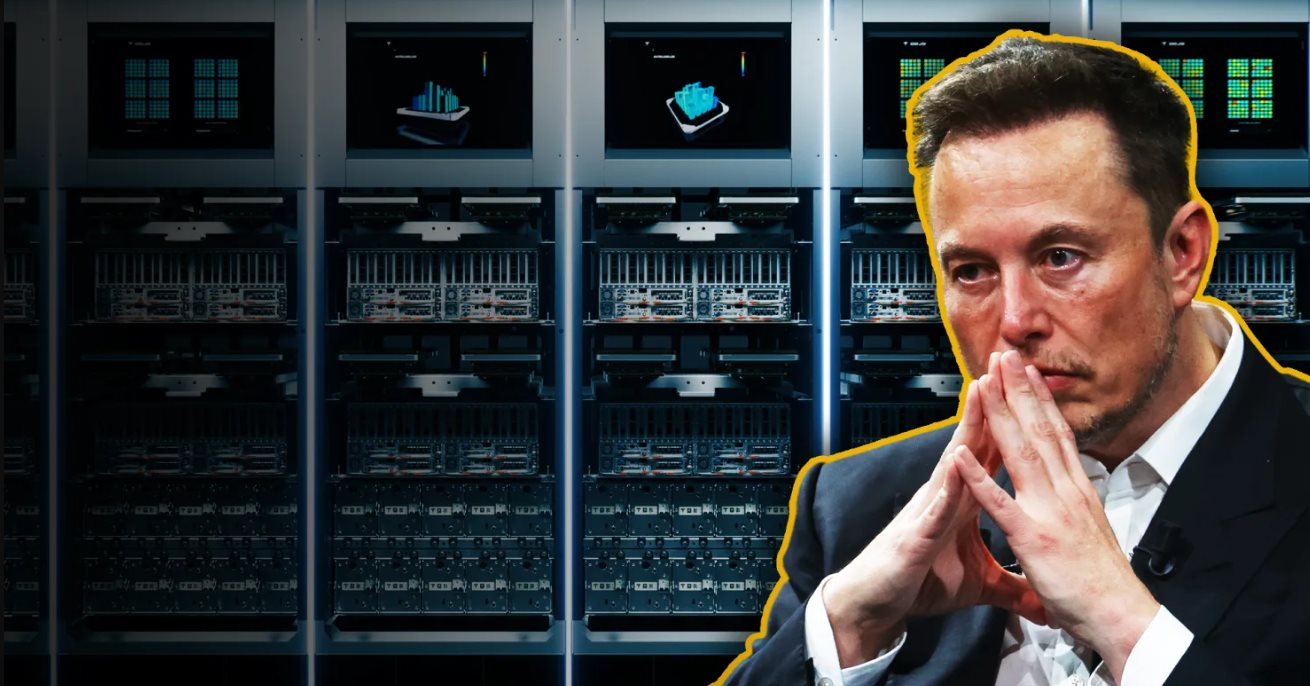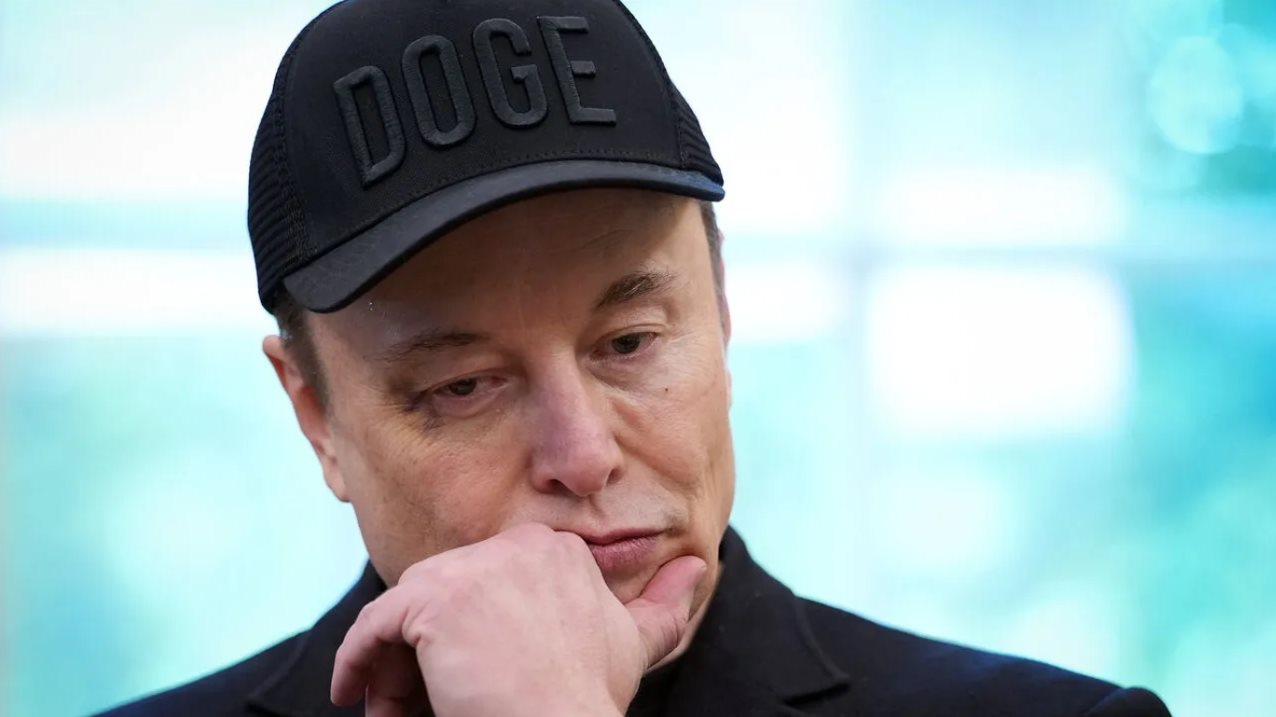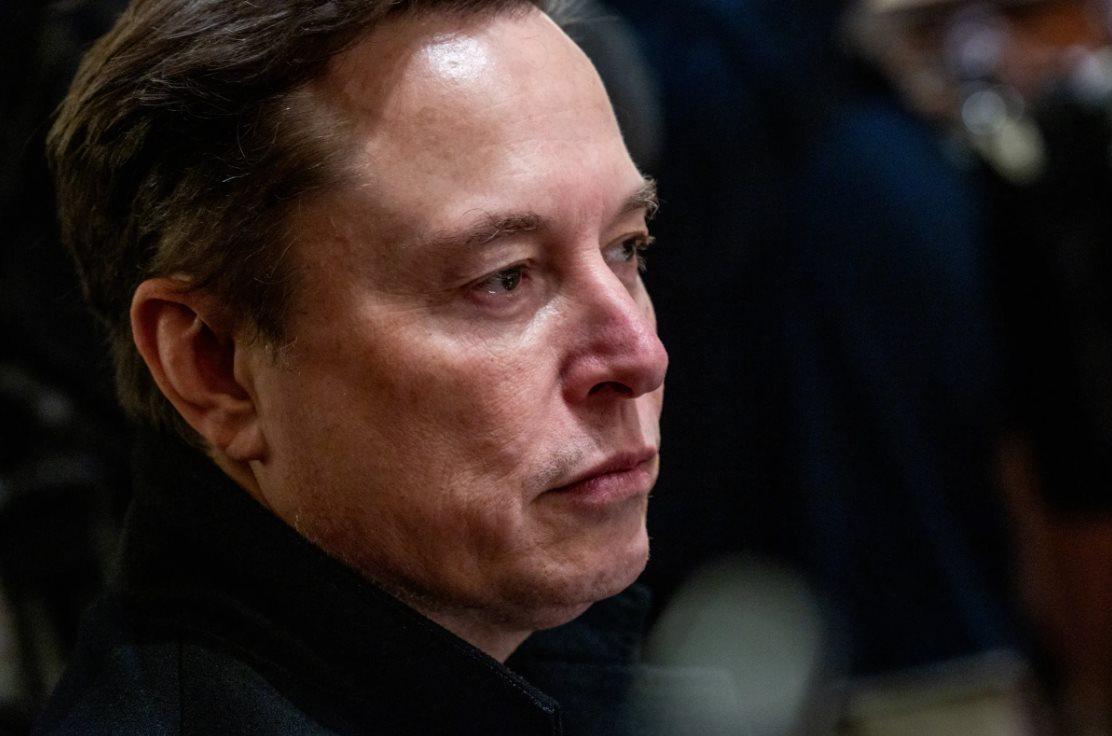Elon Musk has a great vision, but can this billionaire build an organization that is sustainable enough to maintain and develop that technology as more and more people leave?
Once hailed as a technology pioneer, Tesla, under the leadership of CEO Elon Musk, is facing a serious internal crisis. A series of senior staff have left the company, key projects have been canceled and sales have fallen, creating a picture of instability.
The exodus of leaders is not just a matter of personnel, but also a warning about the shakiness of a technology “empire”.
Big question mark
When a project hailed by the media as the “heart of AI” at a company is disbanded, it is rarely a hasty decision but often a sign of a deeper set of problems.
So the news that Tesla is disbanding its Dojo supercomputer development team, team leader Peter Bannon leaving, and about 20 engineers joining the startup DensityAI is attracting attention not only because of the loss of human resources, but also because of the message sent to investors, partners, and the rest of the company’s team.

Dojo, which Elon Musk has described as an integral part of his ambition to turn Tesla into an AI-robotics company, not just an electric car company, is an internal computing infrastructure for training large-scale video processing models for Autopilot, Full Self-Driving, and even the Optimus robot — and some analysts have said it could add hundreds of billions of dollars in value to Tesla.
However, the decision to disband the Dojo team shows that the company is retreating from a full-fledged “do it yourself” strategy, shifting to rely more on outside partners like Nvidia, AMD, and Samsung.
Elon Musk has previously admitted that Tesla is “going both ways — Nvidia and Dojo,” calling Dojo “a gamble,” a long-shot move that could pay off big if it works. Those words now sound like a warning, as the gamble has yet to pay off and the entire team of experts who built the project has “evaporated.”
According to CNBC, about 20 key Dojo employees have left Tesla to join DensityAI — a new company founded by former Dojo executives and colleagues, aiming to develop hardware, chips and systems for AI data centers.
The arrival of DensityAI created a talent “attraction” opportunity: engineers who had a deep understanding of the Dojo architecture were rare in the market. Their departure weakened Tesla’s technical core.
In addition, Peter (Pete) Bannon — who was listed as head of Dojo hardware — also left the company, according to reports. The departure of a project leader amid a mass exodus of employees often leaves a void in both technical and internal trust.
Dojo’s disbandment comes in a broader context: in 2025, Tesla saw a number of senior executives leave the company, from robotics (Milan Kovac) to battery engineering (Vineet Mehta), to Musk’s closest aide (Omead Afshar) to the head of North American sales (Troy Jones). Then, even Tesla’s longest-serving leader, Drew Baglino, senior vice president of hardware and software engineering, left.
The departures were reported by the press as a “wave” rather than a few individuals. The continued loss of management at a time when the company is under pressure from sales and public controversy raises the risk of losing its ability to operate stably.
“We’re losing our best people. They’re the brains that built Tesla. Their departure creates a huge void in expertise and leadership,” an anonymous employee told Business Insider (BI).

Investors reacted immediately when Tesla shares fell following the news of Dojo’s dissolution and reports of a brain drain.
However, the market is only part of the problem, the deeper consequence is the ability to retain and develop long-term programs such as robotaxi or Optimus when employees working under Elon Musk no longer trust this billionaire.
Strategic shift or regression?
“Dojo was our gamble,” said a source close to the Dojo team. “We had dedicated years to building it, and the sudden halt of the project left many people feeling disoriented.”
Dojo is more than just a supercomputer. It is a symbol of Tesla’s ambition to become technologically self-sufficient, to move away from its dependence on Nvidia’s AI chips. Dojo’s demise suggests that Tesla has faced insurmountable technical or financial difficulties that will force the company to return to its traditional path of relying on outside partners.
Tesla has been gradually shifting its semiconductor investment towards cooperation. The company has signed a contract with Samsung worth about $ 16.5 billion to produce the next-generation AI chip (AI6) at its Texas factory, a decision to diversify its supply from TSMC.
In the short term, relying on partners for manufacturing capacity and buying chips from Nvidia/AMD helps Tesla reduce risk and increase flexibility. But in the long term, if Tesla loses its design personnel and core system knowledge, the competitive advantage from its internal hardware and software package could be eroded.
Returning to the story of talent loss, experts say this wave is due to many reasons. First is the sudden and inconsistent change in strategy. Elon Musk’s decision to abandon the Dojo project after many years of investment has shaken the confidence of engineers and leaders. This makes them doubt the company’s long-term vision and eventually leave.
Then there is the harsh work environment. Elon Musk is known for his autocratic leadership style and demands for extraordinary performance. The high work pressure, combined with widespread layoffs to cut costs, has created a stressful work environment that has caused many employees to burn out and choose to leave.

Third, there is fierce competition from outside. New tech companies and electric vehicle competitors are emerging, offering more attractive work environments and growth opportunities. The fact that Dojo engineers have found new homes so quickly shows that the market is still hungry for these talents, offering attractive offers like influence shares and fast decision-making — all of which are attractive to top engineers.
Finally, Elon Musk’s personal scandals, from controversial political activities to social media statements, are also said to have contributed to creating a negative image of the company, affecting employee morale and outside perception.
Without corrective action, Tesla risks falling into a spiral of losing talent, delaying projects, losing confidence, and continuing to lose personnel.
Given the grand vision that Elon Musk has set out, the real challenge is not just building disruptive technology, but building an organization that is resilient enough to sustain and grow that technology. If Tesla fails to stem the talent “leak,” its robotaxi ambitions and internal AI empire may take longer or involve more trade-offs than investors can bear.
News
Greg Norman offered his prediction on what golf might be like in the next 10 years: “Just look at golf being included in the Olympic Games.”
Greg Norman predicts what golf could look like in 10 years’ time Greg Norman’s impact on golf in recent times…
The Beckham family is in turmoil as they cut off all communication with each other.
Beckhams’ heartbreaking split as Brooklyn BLOCKS whole family on Instagram with no warning and Cruz reveals upset Nicola Peltz has…
President Trump complained about the FBI searching Melania’s ‘drawer’ and damaged his wife’s ‘panties,’ causing the entire audience to fall silent!!
‘Weird’ Donald Trump Complains the FBI Made a Mess of Wife Melania’s ‘Panties’ in Unhinged Rant Source: MEGADonald Trump went…
Ryan Seacrest Dumped Again by Girlfriend Camille Orders as the Workaholic Chooses His Career Over Love… Again!
Ryan Seacrest Dumped Again by Girlfriend Camille Orders as the Workaholic Chooses His Career Over Love… Again! Source: MEGA Ryan…
REPORT: Celine Dion is ready for romance again, nearly a decade after Rene Angelil’s death.
Céline Dion Ready for Love Again! Singer Declares She’s Been ‘Given Another Chance at Life’ After Major Health Comeback Source:…
Billionaire Elon Musk wins lawsuit, gets his $56 billion compensation package reinstated.
With the 2018 compensation package restored, Elon Musk is about to earn an additional $139 billion. If billionaire Elon Musk…
End of content
No more pages to load












